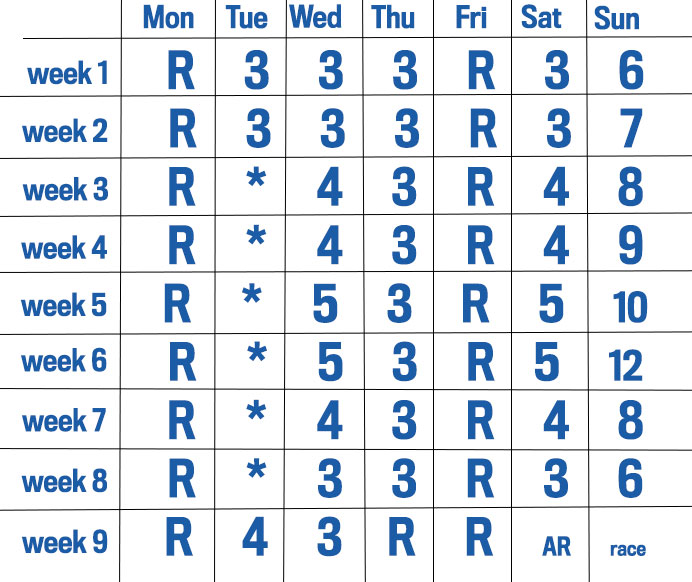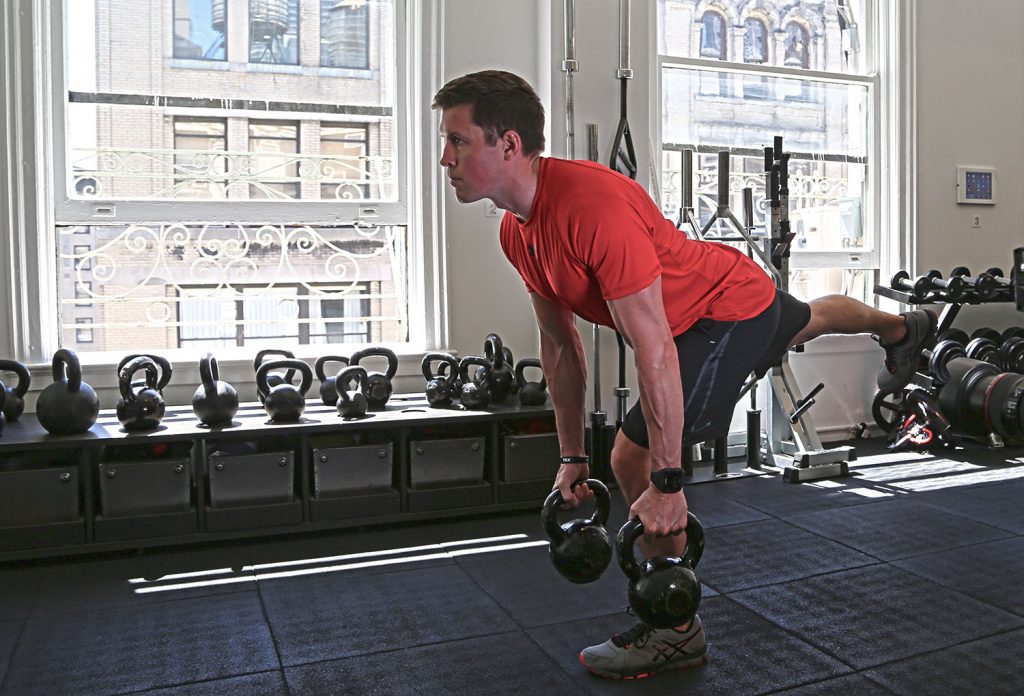The half-marathon, or a 13.1 is a great run. It’s not extremely long, but it’s also far from short. If you’re relatively new to running, then the 13.1 half-marathon is a nice step-up benchmark after the 5K and 10K. If you’re a bit more of a seasoned runner, then a 13.1 a good way to stay competitive without regularly going all in on a full marathon or ultra marathon distances. And on the other hand, if you’re the type that’s not too enthusiastic about running, being able to run a half-marathon comfortably is a solid ability to have.
Training for the 13.1, it isn’t as simple as just running. The running component of training needs to be calculated and smart. Progressing too fast can easily lead to injury. In addition to building up the miles, you should be building up muscular strength and endurance too. Strength and endurance training for running distances that range anywhere from the mile run to an ultra should compliment one another. Running will give you the lungs and stamina, and the work in the weight room will provide a muscular support system.
Related: See what it’s like to eat and train for a 153-mile run
The following is a 9-week training program by Cody Harter (@codyharter), a USA Track & Field coach (USATF), a certified strength and conditioning specialist (CSCS), and the owner of Harter Strength & Conditioning (@harterstrength) in Plano, Texas. Harter had followed this exact training plan in preparation for a local half-marathon.
The runner’s 13.1 workout plan overview
There are five training days during the week and two days off for rest and recovery. Three of the training days include both weight training and running. Two of the training days are running-only.
The three weight training days are broken into two strength workouts. There is an upper body and core strength workout and a lower body and core strength workout. The two strength workouts are alternated throughout the week.
As for the running: four of the workouts during the week are for general endurance with one workout per week dedicated as a “tempo run” or “repeats” to focus on speed and pace.
Runs will progressively increase in distance over time, peak at the mid-way point of the training plan, then slowly taper down before the race.

The weekly training split for half-marathon training
Monday: Rest/recovery
Tuesday: Weight training + run
Wednesday: Weight training + run
Thursday: Weight training + run
Friday: Rest/recovery
Saturday: Run
Sunday: Run
The strength training schedule and workouts
In week 1, the first workout will be repeated twice. In week 2, the second workout will be repeated twice. Continue to follow this alternating schedule for the remainder of the training program.
Strength workout #1: Upper body and core
Bench Press 4 sets x 10 reps
Pull-Ups 4 sets x 10 reps
Dips 4 sets x 10 reps
Military Press 4 sets x 10 reps
Med Ball Sit-Up 4 sets x 20 reps
Hanging Leg Raise 4 sets x 10 reps
Strength workout #2: Lower body and core
Front Squat 4 sets x 10 reps
Elevated Reverse Lunge 4 sets x 10 reps
Hang Cleans 4 sets x 10 reps
Dumbbell Romanian Deadlift 4 sets x 10 reps
Sprinter Crunch 4 sets x 20 reps
TRX Jack Knife 4 sets x 10 reps
The running schedule and workouts

Key:
R – rest
AR – active recovery
* indicate either a “tempo run” or “repeat”. Each week will be progressively be different
# indicates the mileage
What is a tempo run?
The purpose of the tempo run is to train the body to maximize oxygen consumption. While training at higher intensities the body releases lactate and subsequently causes the muscle to fatigue. Increasing lactate threshold allows the muscles to keep contracting and remain less acidic for longer periods of time.
What is a repeat?
Repeats are more for pacing. Most set their paces at or slightly above the goal pace for a race. It’s important to set a rest pace that allows you to recover, but remains fast enough to challenge the cardio respiratory system to slow down while still doing moderate work.
The Tuesday running schedule
Week 3: 3-mile tempo run: 4 sets at 90% max effort for 3 minutes with 90 seconds as a recovery jog.
Week 4: 800 meters repeats: 6 sets at 80% max effort with a 2 minute recovery jog.
Week 5: 5-mile tempo run: 4 sets at 90% max effort for 5 minutes with 90 seconds as a recovery jog.
Week 6: 1600 meter repeats: 4 sets at 80% max effort with a 2 minute recovery jog.
Week 7: 5-mile tempo run: 4 sets at 90% max effort for 5 minutes with 90 seconds as a recovery jog.
Week 8: 800 meters repeats: 6 sets at 80% max effort with a 2 minute recovery jog.

